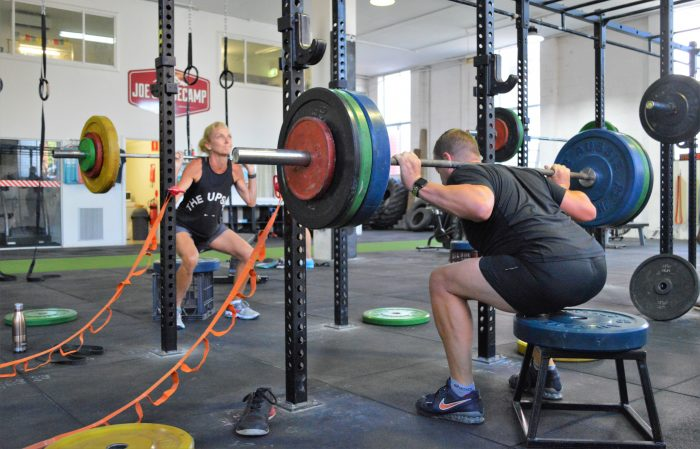
22 Feb Matt’s Training Tip #2: Why am I sticking to these tempos?
Each week, Joe’s Basecamp strength and conditioning coach Matt Reid gives our members tips for building strength and endurance to help them perform at their best and achieve their bucket list goals. This week, Matt explains why it’s important to follow tempos when performing your exercises.
To read Matt’s training tip from last week click here.
Matt’s Tips
Last week, we broke down the theory behind training repetition and how we can grow stronger by applying stress to the body to elicit an adaptation. Lifting tempos are another factor that we can manipulate to target a specific adaptation in the body. Tempos are represented by a set of four numbers which describe the number of seconds spent performing the movement. The first number reflects the speed of the lowering phase of the lift, the second the time spent at the bottom of the lowering phase, the third number being the pushing phase and the fourth being the time spent at the end of the pushing phase.
For example, if you are performing a barbell squat at a tempo of 6210 you would take 6 seconds to squat down, pause for 2 seconds at the bottom, push upwards for 1 second and spend 0 seconds resting at the top (move straight into the next repetition). A set of 8 squats performed at two significantly different tempos eg. 1010 or 6210, are going to result in two very different outcomes based on the stimulus we have provided.
Different speeds can recruit different muscles, even during the same movement; can dictate how long a set lasts for which influences the effect on the body; can influence where strength is gained in the lift; can stress either muscle or tendons more; the list goes on.
This can be quite a broad topic so here is a quick breakdown of what each speed can be beneficial for:
Slower Tempos:
- Generally prescribed during the lowering (Eccentric) phase
- Good for learning the movement pattern, creating awareness and improving stability
- Good for placing more stress on the muscle rather than bouncing off your tendons, therefore creating more muscular damage = muscles repair bigger and stronger
- Good for lengthening tissue. Great mobility gains are made utilising a safe, full range of motion and slower tempos
Faster Tempos:
- Generally prescribed during the pushing (Concentric) phase
- Especially when indicated as X (explosive movement), increases the neural drive to the muscle, therefore works on improving the efficiency of the nervous system
- Can lead to the recruitment of different muscles to those recruited during slower tempos of the same movements, as well as recruiting more muscle fibres overall and improving your ability to do just that
Pauses:
- Pausing at the bottom position is great for eliminating the stretch reflex, teaching you to remain tight and develop strength from a disadvantageous position by increasing intramuscular tension (Isometric Contraction) while in that position (i.e. recruit more muscle fibres to overcome the resistance)
- Great for creating awareness, stability and mobility
- Can also be used to great affect part of the way through an eccentric or concentric movement



Sorry, the comment form is closed at this time.